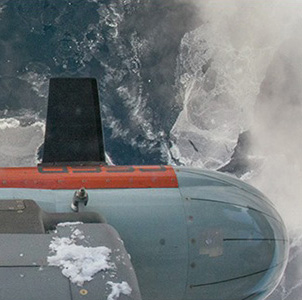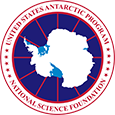|
OPP-supported Study Uncovers Surprising Melting Patterns Beneath Antarctica's Ross Ice Shelf 
National Science Foundation Posted May 28, 2019 The ROSETTA-Ice project, a three-year, multi-institutional data collection survey of Antarctic ice, has assembled an unprecedented view of the Ross Ice Shelf, its structure and how it has been changing over time. Now, in a study published this week in Nature Geoscience, the ROSETTA-Ice team details how they used Icepod, a first-of-its kind system designed to collect high-resolution data across the polar regions, to discover an ancient geologic structure that restricts where ocean water flows. The discovery suggests that local #ocean currents may play a critical role in the ice shelf’s future retreat. Read more in a news release published by the Lamont-Doherty Earth Observatory (LDEO) at Columbia University: https://www.ldeo.columbia.edu/news-events/study-uncovers-surprising-melting-patterns-beneath-antarctica%E2%80%99s-ross-ice-shelf OPP’s support for the project was made through several collaborative awards, including this one to LDEO: https://www.nsf.gov/awardsearch/showAward?AWD_ID=1443534 / Uncovering the Ross Ocean and Ice Shelf Environment and Tectonic setting Through Aerogeophysical Surveys and Modeling (ROSETTA-ICE) IcePod was developed at LEDO and mounted on an LC-130 military cargo plane flown by the New York Air National Guard's 109th Airlift Wing, which support OPP's Arctic and Antarctic research. Ice shelves are massive expanses of floating ice that slow down the flow of the Antarctic ice sheets into the ocean. ROSETTA-Ice collected data from the Ross Ice Shelf, roughly the size of Texas, which helps slow the flow of about 20 percent of Antarctica’s grounded ice into the ocean — the equivalent of 38 feet of global sea level rise. Antarctica’s ice is already melting at an accelerating rate. Predicting how the ice shelf may change in the future requires understanding the complex ways in which the ice, ocean, atmosphere and geology interact with each other. To gain a better understanding of these processes, the multidisciplinary ROSETTA-Ice team approached the Ross Ice Shelf much like explorers visiting a new planet. The team faced the key challenge of how to gather data from such a large area, where ice that is frequently more than a thousand feet thick prevents more traditional ship-based surveys of the seabed. IcePod solved their problem. Its instruments measure ice-shelf height, thickness and internal structure, and the magnetic and gravity signal of the underlying rock.
|



For USAP Participants |
For The Public |
For Researchers and EducatorsContact UsU.S. National Science FoundationOffice of Polar Programs Geosciences Directorate 2415 Eisenhower Avenue, Suite W7100 Alexandria, VA 22314 Sign up for the NSF Office of Polar Programs newsletter and events. Feedback Form |
